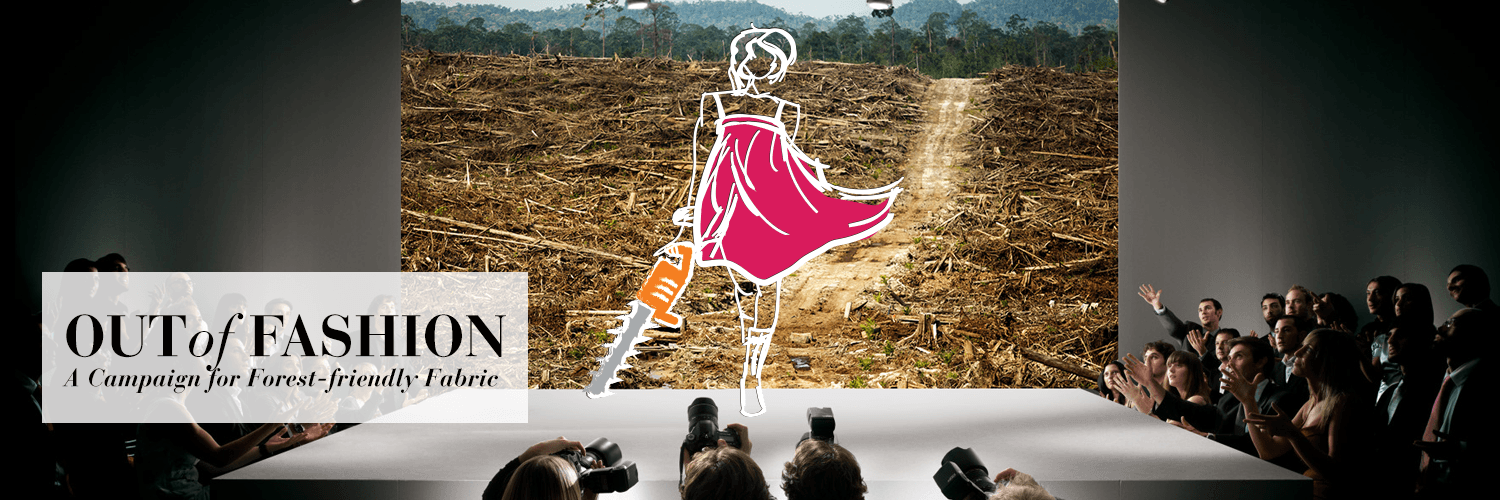At RAN, it isn’t our place to tell you what fabrics to buy. Really. All fabrics have impacts, and we aren’t experts in every fabric out there. What we believe is that clothing companies should trace their supply chains, eliminate controversial fiber and suppliers, create policies to ensure they never purchase controversial fiber again, and — ideally — join us in the fight to make their industry more sustainable.
In the meantime, we encourage customers to buy used, to recycle and up-cycle, to host clothing swaps, and to do without when and where they can.
Join us in continuing to call on the Fashion 15 to adopt comprehensive policies to eliminate forest destruction and human rights abuses from their supply chains.
And if you still want some more specific advice… well, we have some thoughts:
While we were researching this campaign, we looked into a number of different fabrics, and we definitely found that there are also a few fabrics that are gentler on the earth. Here’s what we found:
Hemp
Hemp has a very low impact. It doesn’t require the use of any chemicals (pesticides or fertilizers) on their crops. It requires less water than organic cotton. Hemp is also much stronger than cotton, and creates a high quality material when recycled. Hemp can grow in a wide range of climates, making it widely available all over the world.
Ramie
Ramie, also known as grass linen, is a very fast-growing crop. It yields up to six harvests per year, giving it a reputation for sustainability. Growing, spinning and weaving are expensive and intricate processes. Due to the involved nature and higher cost of taking ramie from plant to garment, it has yet to become a popular fabric.
Jute
Jute also treads lightly on the earth. It requires low energy input, and actually acts as a small C02 sink. Farming uses no chemicals on these crops. Jute is also being used to make other pulp and paper products, not just clothing. Due to demand for these products, jute’s importance could increase over the coming years.
Linen
Linen has a very low impact and requires very little to grow. Farmers use little or no pesticides at all on the flax plant, which becomes linen fiber. It also requires low quantities of water to grow. Linen also emits much lower levels of CO2, as compared with the cotton plant.
Organic Cotton
Organic cotton doesn’t use chemicals or GMOs, but there are questions about water usage and other impacts, including the chemicals used in manufacture and milling processes.
Bamboo
Bamboo has a low grow-impact on the soil, but requires high energy and chemical inputs. Most bamboo production involves toxic bleaching of the final product.
Recycled Polyester
Recycled polyester/PET uses less energy to make clothes from recycled plastics, but there are problems with the toxic recycling process and the original manufacture of polyester/PET.
Soy
Soy can be organic and in those cases will use no pesticides. However, there are possible GMO impacts, and more information is needed before we can safely recommend it as an alternative.
These fabrics demonstrate what is possible in the world of forest-friendly fabric. These textiles have a small footprint, require low inputs and don’t rely on deforestation to produce. Ultimately, though, companies must trace their supply chains and develop full forest policies in order to truly eliminate any controversy from their fabric. You can call on the Fashion 15 today to do just that.
For further information, see:
- http://www.maisondexceptions.com/en/ramie-un-textile-durable-pour-le-futur/
- http://www.fashionmegreen.com/what-are-sustainable-fibres/
